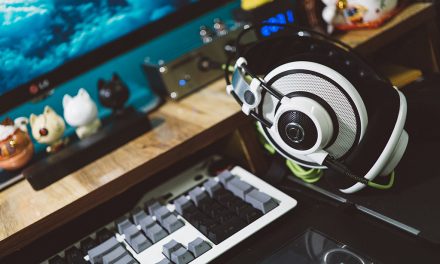
Top 10 Best 3D Printers of 2025
In 3D printing, successive layers of material are formed under computer control to create an object. These objects can be of almost any shape or geometry and are produced from a 3D model or other electronic data source.
There are two main types of 3D printers:
- FFM (fused filament manufacturing) and
- SLA (stereo lithography).
FFM printers work by melting a plastic filament in a moving print head to form the model. SLA printers use an ultraviolet (UV) laser to solidify a resin, focusing the laser to form the solid model. FFM printers are generally cheaper, simpler and easier to use.
Whichever type of printer you choose, pay attention to the type of material it can use to print. The filament material used by FFM printers is available in several different materials, such as PLA (a brittle, biodegradable material), ABS (the same plastic used in Lego blocks), nylon, TPE (a soft, rubberlike material) and HDPE light, tough polystyrene). Many of these materials, particularly PLA and ABS, are available in a huge range of colors.
SLA printers have fewer options than their FFM counterparts, but some printers can use resins that produce models ranging from very rigid to flexible and rubbery.
The best printers will allow you to determine which way you want to go with this, producing prints quickly or more slowly but at higher quality. Here we take a look at the Top 10 Best 3D Printers of 2016.
10. ROBO 3D R1 Plus
The Robo 3D R1 is especially easy to calibrate. A multipoint auto leveling feature ensures you get excellent prints with very little effort. You can also adjust other settings and calibrations yourself from the software. When you have your printer calibrated perfectly, you’re more likely to print precise and accurate models. The Robo 3D R1 Plus is a uniquely designed printer with a large print bed and easy-to-use infrastructure.
9. Flashforge Dreamer 3d Printer
Dreamer features a closable door and a removable cover to keep out dust and foreign particles, which also make Dreamer a fully enclosed workspace to retain heat in the chamber, leading to better ABS prints. All of its hot and moving components are contained inside it to make it safer to use. Dreamer dual extrusion is fine-tuned to print color-interlaced object without pausing the print, and swapping next filament each time when a different color or material is needed.
8. Dremel Idea Builder 3D Printer
It is easy to build objects with the Dremel on-board software and color touchscreen, which enables a preview of each model before you build. Additionally, the Dremel 3D Idea Builder comes equipped with a pre-installed extruder unlike other 3D printers that require you to install it yourself. This makes setup as simple as plugging in your printer, and you’re ready to build. Along with easy-to-use software, you can start turning your ideas into models and projects in minutes.
7. FlashForge 3d Printer Creator Pro
The FlashForge Creator Pro is very versatile and compatible with Windows, Max OSX and Linux operating systems so pretty much any mainstream computer should work great. Odds are good if you’re reading this you’ve got the computer under control. It comes with Replicator G and is compatible with MakerWare. Input file types include STL and gcode. Printing can be done with the included SD card or over a wired USB cable. 4 Point Leveling System has been replaced with a 3 point system making adjustments quicker and easier. Frame is now metal, though sides are still wooden.
6. QIDI Technology 3DP-QDA16-01
The sturdily constructed QIDI Tech has a metal frame and weights little more than 46 pounds (21 kilograms). The plate is constructed from aviation grade aluminum, which prevents warping from the 120 Fahrenheit temperature. The printer is compatible with many different common operating systems from Linux and Mac OSX to Windows. The dual extruders enable multi-color printing in layer thicknesses that adjust from 0.1 to 0.3 millimeters. The machine functions either via the PC tether or the SD card.
5. Dremel 3D40-01
The new Dremel Idea Builder 3D40 is being marketed at schools and educational institutions for its ease of use. The upgrade features USB- and Wi-Fi-enabled printing, as well as active filament monitoring, assisted leveling, and what Dremel describes as a “maintenance-free extruder”. The build volume of the 3D40 is 10” x 6” x 6.7” (255 mm x 155 mm x 170 mm) and, while the upgrade still does not reach the functionality of the Flashforge Dreamer, in terms of a heated bed, it does have a 3.5” full color IPS touch screen and 4 Gb of internal storage.
4. FlashForge 3D Printer
The FlashForge Creator 3D printer is totally compatible with Makerbot’s firmware, Makerware and .X3G files. The FlashForge Creator front screen is bigger and brighter with blue and white text. 8.8″x5.7″x5.9″ builds Volume, W/2 Free Rolls is certainly that and will be a excellent acquisition. W/2 Free Rolls comes highly recommended and is a regular choice for most people.
3. MakerGear M2 Desktop 3D Printer
Black powder-coated rigid steel frame. CNC machined black anodized-aluminum axes mounts. Precision X and Y linear rails. Precision ground and polished steel shafting. 4-start lead screw with integrated NEMA 17 stepper. Platform heater included. includes 1K spool of 1.75 millimeters PLA plastic filament. The plastic handle, extruder mount, spool holder and other plastic parts used on M2 are all printed in-house on production M2 machines.
2. MakerBot Replicator Mini Compact 3D Printer
With the MakerBot Smart Extruder, the Replicator Mini can detect when a filament cartridge is empty and automatically pause your print. It can also send notifications to the MakerBot Desktop or mobile app with important information. There is also an on-board camera for print monitoring and easy sharing to the MakerBot Thingiverse and social networks. With access via USB or Wi-Fi, you’ll be able to use the MakerBot Desktop or mobile app to push your 3D model to the Replicator Mini.
1. Sindoh’s DP200 3DWox 3D Printer
The 3DWox features a close build space, USB port, WiFI wireless connectivity, USB flash-drive slot, and is compatible with Microsoft Windows 7 and higher, and Apple Mac OSC 10:10 or later. The 3Wox uses PLA and ABS plastics material and can build objects up to 8.3″ x 7.9″ x 7.7″ (210 x 200 x 195mm) in size. There’s also an internal monitoring camera for remote viewing of object-building via PCs, laptops, and smartphones, as well as a 5″ LCD screen with full-color touch-screen menu.
Features:
- Auto-loading Cartridge
- Assisted Bed Leveling
- Smart Slicer Program
- FFF based (Fused Filament Fabrication) printing technology.


















































![Top 10 Best Joysticks for PC of [y]](https://top10geeks.com/wp-content/uploads/2016/06/playstation_symbols_graphics_keys_22097_1920x1080-150x150.jpg)
![Top 10 Best Baby Monitors of [y]](https://top10geeks.com/wp-content/uploads/2016/05/baby-monitors-150x150.jpg)
![Top 10 Best 3D Projectors of [y]](https://top10geeks.com/wp-content/uploads/2016/06/3d-projectors-150x150.jpg)
![Top 10 Best Stabilizers for GoPro of [y]](https://top10geeks.com/wp-content/uploads/2016/08/61DbLw-Xo2L._SL1500_-150x150.jpg)
![Top 10 Best Bluetooth Speakers of [y]](https://top10geeks.com/wp-content/uploads/2016/09/bsp10-take-it-with-you-c349d6ce20c7cbedfaf06be94c00c2f5-940-150x150.jpg)
![Top 10 Best Wireless Security Cameras of [y]](https://top10geeks.com/wp-content/uploads/2016/07/dreamstimemaximum_25241712-150x150.jpg)
![Top 10 Best Wi-Fi Range Extenders of [y]](https://top10geeks.com/wp-content/uploads/2016/08/11routers-150x150.jpg)



What’s up, its nice article about media print, we all be familiar with media is
a enormous source of information.
Interesante información !!!!
Hello to every , because I am genuinely eager of reading this website’s post to be updated regularly.
It includes nice information.
If some one wants to be updated with latest technologies afterward
he must be pay a visit this site and be up to date everyday.
Nice post. I was checking continuously this weblog and I am inspired!
Extremely helpful information specially the last part 🙂 I
care for such info a lot. I was seeking this particular info for a long time.
Thanks and best of luck.
There is certainly a lot to find out about this subject.
I love all of the points you made.
Way cool! Some very valid points! I appreciate you writing this write-up and
also the rest of the website is really good.
When some one searches for his necessary thing, therefore he/she wants to be available that in detail, so that thing is
maintained over here.
I have learn some excellent stuff here. Definitely value bookmarking for revisiting.
I wonder how a lot effort you put to make the sort of wonderful informative website.
Excellent blog you have got here.. It’s difficult to find high-quality writing like yours
these days. I really appreciate people like you! Take care!!
Good day I am so excited I found your site, I really found you by
error, while I was researching on Digg for something else, Nonetheless I am here now and would
just like to say thanks for a marvelous post and a all round enjoyable blog (I also love the theme/design), I don’t have time to browse it all at
the minute but I have book-marked it and also added in your RSS feeds, so when I have time I will be
back to read more, Please do keep up the awesome work.
Yes! Finally someone writes about 3d printing system.
I bought the MakerGear M2 Desktop 3D Printer. It’s much cheaper compared to other featured product of the same trim. 🙂